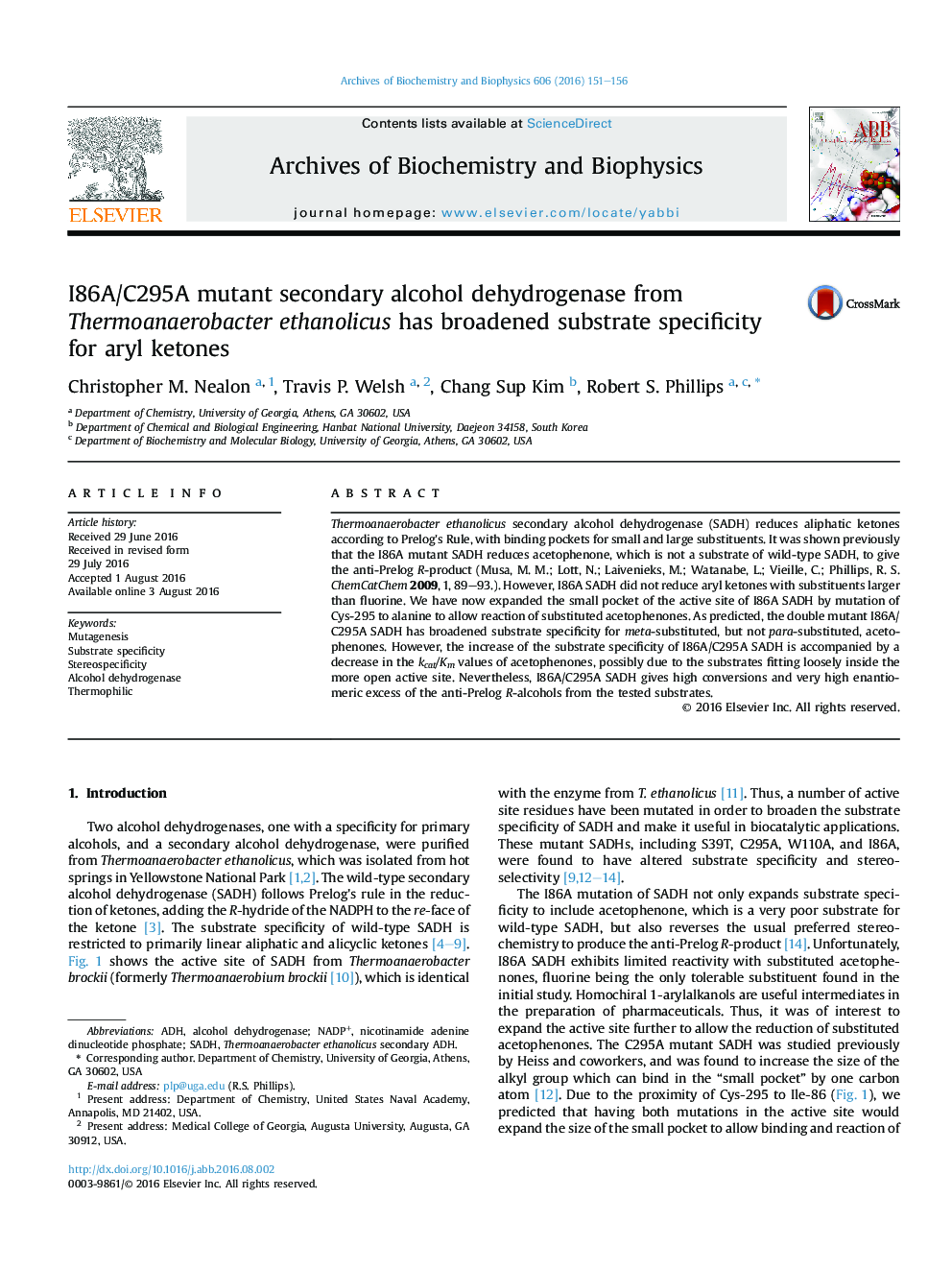| Article ID | Journal | Published Year | Pages | File Type |
|---|---|---|---|---|
| 1924709 | Archives of Biochemistry and Biophysics | 2016 | 6 Pages |
•I86A/C295A SADH was designed to accept a wider range of acetophenone substrates.•I86A/C295A SADH has lower efficiency but broader substrate range.•I86A/C295A SADH reduces meta-substituted acetophenones, but not para.•All reduction products have >99% ee R-stereochemistry.•Both steric and electronic effects affect substrate activity of I86A/C295A SADH.
Thermoanaerobacter ethanolicus secondary alcohol dehydrogenase (SADH) reduces aliphatic ketones according to Prelog's Rule, with binding pockets for small and large substituents. It was shown previously that the I86A mutant SADH reduces acetophenone, which is not a substrate of wild-type SADH, to give the anti-Prelog R-product (Musa, M. M.; Lott, N.; Laivenieks, M.; Watanabe, L.; Vieille, C.; Phillips, R. S. ChemCatChem2009, 1, 89–93.). However, I86A SADH did not reduce aryl ketones with substituents larger than fluorine. We have now expanded the small pocket of the active site of I86A SADH by mutation of Cys-295 to alanine to allow reaction of substituted acetophenones. As predicted, the double mutant I86A/C295A SADH has broadened substrate specificity for meta-substituted, but not para-substituted, acetophenones. However, the increase of the substrate specificity of I86A/C295A SADH is accompanied by a decrease in the kcat/Km values of acetophenones, possibly due to the substrates fitting loosely inside the more open active site. Nevertheless, I86A/C295A SADH gives high conversions and very high enantiomeric excess of the anti-Prelog R-alcohols from the tested substrates.
Graphical abstractFigure optionsDownload full-size imageDownload high-quality image (131 K)Download as PowerPoint slide
